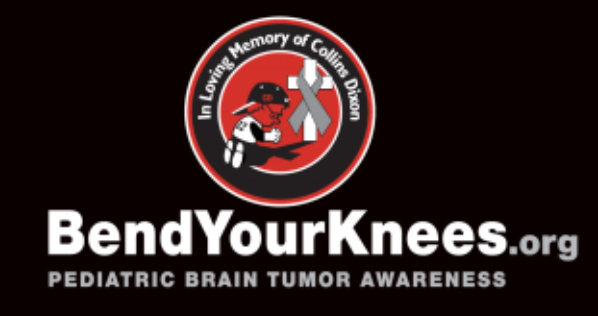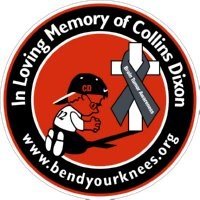Childhood Brain and Spinal Cord Tumors.
By Tobey J. MacDonald MD, Director, Pediatric Neuro-Oncology Program, Aflac Cancer and Blood Disorders Center, Children’s Healthcare of Atlanta, Associate Professor of Pediatrics, Emory University School of Medicine.
Every year, approximately 3,000 children in the United States are diagnosed with a central nervous system (CNS) tumor of the brain or spinal cord. Brain and spinal cord tumors are the leading cause of death due to cancer in children, and are second only to leukemia in frequency of pediatric cancers. Pediatric CNS tumors can occur at any age from birth to young adulthood, but differ from the adult counterparts in terms of tumor types, treatments used, response and tolerance to treatment (young children typically tolerate therapy better than adults).
Parents frequently ask “Why did my child get a brain tumor?” Although there are some well established familial and genetic associations, such as neurofibromatosis and tuberosclerosis among others, the vast majority of CNS tumors have no known cause. Multiple studies, including one of cell phone use, have failed to show a valid causal relationship between environmental factors and childhood brain tumors with the exception of exposure to ionizing radiation.
The symptoms of a CNS tumor depend on the size and location of the tumor. The most common symptoms are those related to an increase in intracranial pressure (ICP) due to a blockage in the flow of the cerebrospinal fluid (CSF). The symptoms of elevated ICP include headache and vomiting among others. An inability to move one eye out to the side can also be a common sign of increased ICP. Excessive lethargy or difficulty in arousing are more advanced signs of elevated ICP. Other common symptoms of brain tumors include seizures, weakness or paralysis, changes in vision or speech, and disturbances in balance and coordination. Spinal cord tumors may cause bowel and bladder dysfunction. Tumor involvement of the hypothalamus or pituitary can lead to hormonal imbalances, or can manifest as defects in vision. Tumors of the brainstem typically present with deficits in the nerves that control the muscles of the face, mouth, throat and neck. Overall, the symptoms of a brain tumor tend to be vague and non-specific, often mimicking a viral illness but lacking a fever and persisting longer than the usual duration of a virus. Thus, a high level of suspicion by healthcare providers is important.
To establish the diagnosis of a CNS tumor after a suggestive history and physical exam, the most rapid test is a head CT, which is 96-98% sensitive for the detection of a brain tumor and can quickly determine whether there is increased ICP, bleeding, bony erosions or some other pathology. For any tumor detected by CT or in the case of a suspicious clinical history, an MRI of the brain is warranted to confirm the diagnosis and better delineate the anatomy in preparation for surgical intervention. For suspected spinal cord tumors, MRI is the preferred initial imaging. A lumbar puncture may be warranted to determine whether there is metastatic spread within the CSF.
For a definitive diagnosis to determine the course of treatment, the next essential step is a biopsy or surgical removal of the tumor by the pediatric neurosurgeon. With very few exceptions, this is the only way to know the precise tumor type and accurately predict outcome. A benign tumor does not metastasize and is typically curative by surgery alone. In contrast to that seen in adults, the majority of CNS tumors in children are benign. Unfortunately, some tumors are located in critical areas that are impossible for the neurosurgeon to remove without causing significant complications. These areas include the visual pathways, brainstem, and deep central regions of the brain. Benign CNS tumors in these locations can cause life-long debilitating neurologic impairment, even death, and as such, are typically treated with chemotherapy or radiation.
Malignant tumors contain cancer cells, are usually fast growing and invade surrounding tissue and have the capacity to metastasize. However, spread outside the CNS is rare. Because of the tendency to recur, malignant tumors are typically treated with radiation, with or without chemotherapy, irrespective of the extent of surgical removal of the tumor.
The three most common types of childhood CNS tumors are:
Astrocytomas, classified as grade I-IV based on the presence of aggressive features, IV being the most aggressive. Juvenile pilocytic astrocytoma (JPA, grade I) is the most common childhood brain tumor. Diffuse fibrillary astrocytoma (grade II) is more commonly seen in adults than children. Anaplastic astrocytoma (grade III) and glioblastoma multiforme (GBM, grade IV) share a similarly poor outcome and are typically treated in the same manner as the adult counterpart. Brainstem gliomas occur almost exclusively in young children and can be diffuse within the pons, a diffuse intrinsic pontine glioma (DIPG), or focal. DIPG, usually begin as grade II but ultimately progress to grade IV.
Medulloblastoma which arises in the cerebellum, has the greatest propensity to disseminate and is the most common malignant brain tumor in children.
Ependymomas are derived from cells lining the CNS ventricles, most commonly the floor of the 4th ventricle.
Together, these three tumor types make up over 90% of all brain and spinal cord tumors seen in children.
Treatment is determined by the tumor’s type, genetics and location as well as the patient’s age and overall health. For grade I and II benign astrocytomas, surgical resection alone is curative in over 95% of cases. Radiation treatment or chemotherapy is reserved for inoperable or recurrent benign astrocytomas. Radiation therapy is administered for all malignant astrocytomas, including DIPG, and almost all ependymomas, irrespective of the degree of surgical removal. Medulloblastomas are treated with a combination of radiation and chemotherapy after initial surgical removal. For very young children in whom radiation may be considered too harmful to the developing CNS, alternative approaches, including high-dose chemotherapy with stem cell rescue, are being investigated. The neuro-oncologist will determine which treatment will provide the most benefit. Monitoring neuro-cognitive development, hearing and endocrinologic function are important parts of the care, especially for young children and those receiving whole-brain or large field irradiation.
For long term survivors, continued follow up by a neuro-oncology team is necessary to monitor for late effects of treatment including infertility, growth and secondary tumors or cancers. Rehabilitation to regain motor skills and muscle strength may be required. Speech therapists and physical and occupational therapists play an active role in the rehabilitation process.

